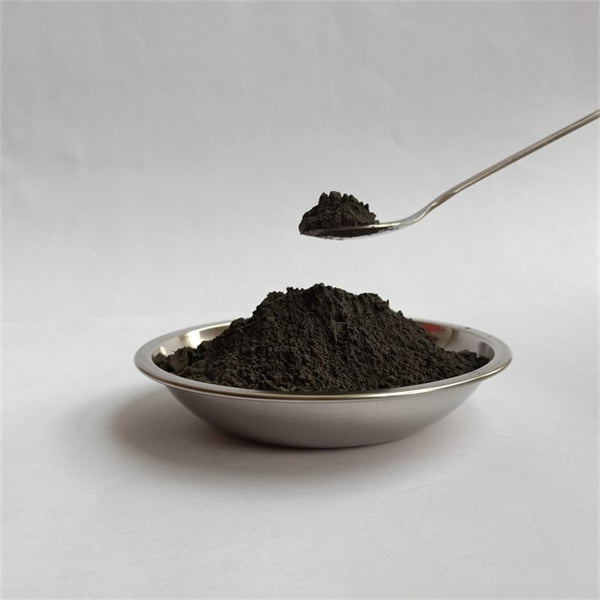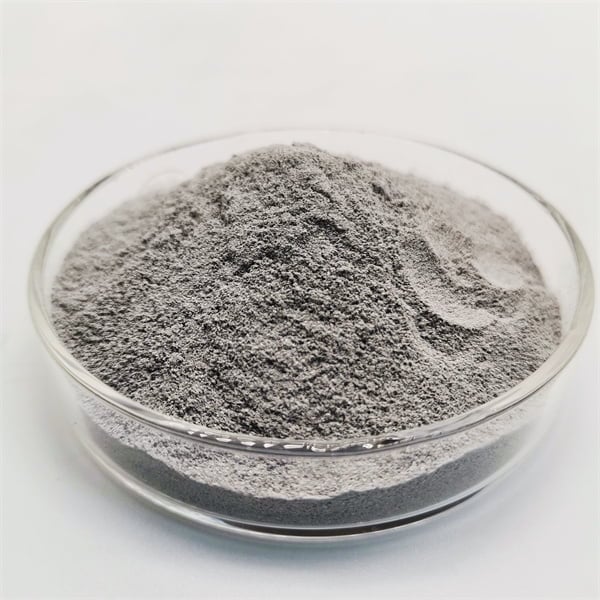Two types of high-strength 3D printing metal powders
Table of Contents
The world of 3D printing has exploded onto the scene, revolutionizing how we design and manufacture everything from toys to complex aerospace components. But when it comes to building parts that demand immense strength and resilience, metal powders take center stage. In this intricate dance of innovation, two materials reign supreme: stainless steel and titanium 3D printing metal powders. Both offer exceptional strength, but their unique properties cater to distinct applications. Let’s delve into the fascinating realm of these high-performance powders, exploring their strengths, weaknesses, and the ideal scenarios where each shines.

Stainless Steel 3D Printing Metal Powder
Imagine a material that’s incredibly strong, resists corrosion like a champion, and is readily available – that’s the magic of stainless steel 3D printing metal powder. Think of your trusty kitchen sink – the same robust, corrosion-resistant properties that make it impervious to years of scrubbing and soapy water also translate to the 3D printed world.
Advantages of Stainless Steel 3D Printing Metal Powder:
- Strength and Durability: Stainless steel boasts impressive tensile strength, making it ideal for parts that experience significant stress. From medical implants enduring the wear and tear of daily life to industrial components battling harsh environments, stainless steel stands strong.
- Corrosion Resistance: Stainless steel’s resistance to rust and other forms of corrosion is legendary. This makes it perfect for applications exposed to moisture, chemicals, or saltwater, like marine parts or components used in the food and beverage industry.
- Cost-Effectiveness: Compared to other high-strength metal powders like titanium, stainless steel is generally more affordable. This cost advantage makes it an attractive option for projects with budgetary constraints.
- Wide Availability: Stainless steel is a common material, readily available in various forms, including 3D printing powders. This translates to shorter lead times and easier sourcing for manufacturers.
Disadvantages of Stainless Steel 3D Printing Metal Powder:
- Weight: Compared to titanium, stainless steel is denser, translating to heavier parts. This can be a disadvantage for applications where weight reduction is crucial, such as in aerospace or high-performance automotive components.
- Limited High-Temperature Performance: While stainless steel can handle moderate temperatures, it doesn’t possess the extreme heat resistance of some other metal powders. For applications requiring prolonged exposure to very high temperatures, other materials might be better suited.
- Surface Finish: Stainless steel 3D printed parts can sometimes have a rougher surface finish compared to other materials. This might necessitate additional post-processing steps for applications requiring a smoother aesthetic.
Applications of Stainless Steel 3D Printing Metal Powder:
- Medical Implants: Stainless steel’s biocompatibility and corrosion resistance make it a popular choice for medical implants like joint replacements and surgical instruments.
- Aerospace Components: While weight is a concern, stainless steel can be used for specific aerospace parts that prioritize strength and corrosion resistance over weight reduction.
- Industrial Components: From valves and pumps to tools and molds, stainless steel’s strength and affordability make it a versatile choice for various industrial applications.
- Consumer Goods: Think high-end cutlery, durable outdoor equipment, or even custom-designed architectural elements – stainless steel’s combination of strength and aesthetics can find its way into various consumer goods.
Titanium 3D Printing Metal Powder
Imagine a metal that’s incredibly strong yet surprisingly light, with a biocompatible nature that makes it a dream for medical implants. That’s the beauty of titanium 3D printing metal powder. Think of a high-performance bicycle frame – strong enough to handle intense cycling demands, yet lightweight enough for effortless climbing. This analogy perfectly captures the essence of titanium.
Advantages of Titanium 3D Printing Metal Powder:
- Strength-to-Weight Ratio: Titanium boasts an exceptional strength-to-weight ratio. This means it can be incredibly strong without adding excessive weight, making it ideal for applications where weight reduction is critical.
- Biocompatibility: Titanium is remarkably biocompatible, meaning it integrates well with the human body and minimizes the risk of rejection. This makes it a top choice for medical implants like prosthetics and dental components.
- High-Temperature Performance: Compared to stainless steel, titanium offers superior high-temperature resistance. This makes it suitable for applications exposed to extreme heat, such as jet engine components or parts used in high-performance machinery.
- Corrosion Resistance: While not quite as exceptional as stainless steel, titanium still demonstrates impressive corrosion resistance, making it suitable for environments with moderate exposure to moisture or chemicals.
Disadvantages of Titanium 3D Printing Metal Powder:
- Cost: This can be a significant drawback for projects with tight budgets. However, the weight savings and other unique properties of titanium can sometimes outweigh the higher cost in specific applications.
- Reactivity: Titanium can be reactive during the 3D printing process, requiring a controlled environment with inert gas to prevent unwanted reactions. This adds complexity to the printing process compared to stainless steel.
- Machinability: While strong, finished titanium parts can be challenging to machine due to their high strength. This might necessitate the use of specialized machining techniques or diamond tooling, adding to the overall cost.
Applications of Titanium 3D Printing Metal Powder:
- Aerospace Components: The lightweight strength of titanium makes it a highly sought-after material for aerospace components like aircraft parts, where weight reduction is crucial for fuel efficiency and performance.
- Medical Implants: Titanium’s biocompatibility and high strength make it perfect for medical implants like knee and hip replacements, dental implants, and cranial implants.
- High-Performance Automotive: From lightweight racing components to high-end car parts demanding strength and durability, titanium finds its place in the world of high-performance automobiles.
- Sporting Goods: Think high-tech prosthetics for athletes, custom-designed golf clubs, or even lightweight yet robust bike frames – titanium’s strength-to-weight ratio makes it ideal for various sporting goods.
The Choice of Material Depends on Specific Application Requirements
When choosing between stainless steel and titanium 3D printing metal powders, the specific application requirements take center stage. Here’s a breakdown to help you decide:
Choose Stainless Steel if:
- Cost is a major concern: Stainless steel offers a more budget-friendly option compared to titanium.
- Corrosion resistance is paramount: Stainless steel excels in environments with high moisture, chemicals, or saltwater exposure.
- Weight is not a critical factor: If the application prioritizes strength and affordability over weight reduction, stainless steel is a good choice.
- Wide availability is important: Stainless steel’s readily available nature allows for shorter lead times and easier sourcing.
Choose Titanium if:
- Weight reduction is essential: For applications where every gram counts, titanium’s incredible strength-to-weight ratio makes it the clear winner.
- Biocompatibility is crucial: Titanium’s exceptional biocompatibility makes it the go-to choice for medical implants.
- High-temperature performance is needed: If the application involves extreme heat, titanium’s superior high-temperature resistance offers a distinct advantage.
Additional Considerations
While strength is a key factor, several other considerations come into play when selecting 3D printing metal powders:
- Surface Finish: Both stainless steel and titanium can have a rougher surface finish compared to some other materials. Depending on the application’s aesthetic requirements, post-processing techniques like polishing or blasting might be necessary.
- Printability: Different metal powders exhibit varying flow characteristics that can impact printability. Some materials might require specialized printing techniques or equipment.
- Post-Processing: Both stainless steel and titanium parts might require post-processing steps like heat treatment or stress relieving to achieve optimal mechanical properties.

FAQ
Q: Is 3D printed metal as strong as traditionally manufactured metal?
A: Yes, 3D printed metal parts can achieve strength properties comparable to traditionally manufactured metal parts using techniques like forging or machining. However, the specific strength can vary depending on the chosen material, printing process, and post-processing techniques.
Q: What are some of the limitations of 3D printed metal?
A: Current limitations of 3D printed metal include:
- Limited Build Size: Compared to traditional manufacturing techniques, 3D printed metal printers generally have smaller build volumes.
- Cost: While costs are coming down, 3D printed metal can still be more expensive than some traditional manufacturing methods for high-volume production.
- Surface Finish: As mentioned earlier, surface finish can be a challenge, requiring additional post-processing steps depending on the application.
Q: What is the future of 3D printed metal?
A: The future of 3D printed metal is bright! Advancements in technology are leading to:
- Larger build volumes: This will allow for the creation of bigger and more complex metal parts.
- Reduced Costs: As technology matures and adoption increases, the cost of 3D printed metal is expected to decrease.
- New Materials: The development of new and even more specialized metal powders will further expand the capabilities of 3D printing.
Share On
MET3DP Technology Co., LTD is a leading provider of additive manufacturing solutions headquartered in Qingdao, China. Our company specializes in 3D printing equipment and high-performance metal powders for industrial applications.
Inquiry to get best price and customized Solution for your business!
Related Articles
About Met3DP
Recent Update
Our Product
CONTACT US
Any questions? Send us message now! We’ll serve your request with a whole team after receiving your message.

Metal Powders for 3D Printing and Additive Manufacturing
COMPANY
PRODUCT
cONTACT INFO
- Qingdao City, Shandong, China
- [email protected]
- [email protected]
- +86 19116340731

















